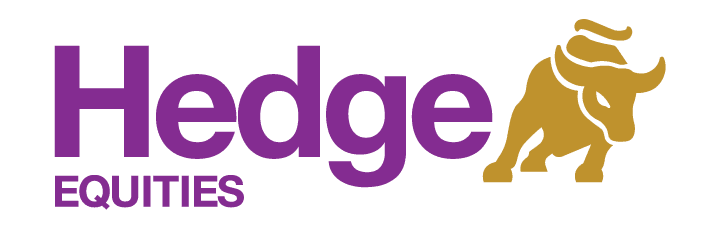As a young professional in India, you are at a unique and powerful stage of your life. You have time on your side, a growing income, and the ambition to build a secure and prosperous future. One of the most effective ways to turn that ambition into reality is by building an investment portfolio. However, for many, the world of investing can seem complex and intimidating. Where do you start? What should you invest in? How do you manage risk?
At Hedge Equities, we believe that wealth creation should be accessible to everyone. Since our inception in 2008, our mission has been to empower individuals just like you to take control of their financial future. This guide is designed to demystify the process of building your first investment portfolio. We will walk you through each step, showing you how our expert guidance and tailored services can help you start your journey with confidence.
Step 1: Define Your Financial Goals
Before you invest a single rupee, you must understand what you are investing for. Your financial goals are the destination, and your investment portfolio is the vehicle that will get you there. Without clear goals, you are investing without direction.
Common financial goals for young professionals include:
Wealth Creation: Growing your money over the long term to achieve financial independence.
Retirement Planning: Building a substantial corpus to ensure a comfortable life after you stop working.
Major Purchases: Saving for a down payment on a house, buying a new car, or funding a wedding.
Education: Saving for your own higher education or for your future children's schooling.
Tax Saving: Investing in specific instruments to reduce your taxable income, such as through Equity Linked Savings Schemes (ELSS).
Each goal has a different time horizon and risk profile. Saving for a down payment in three years requires a much different strategy than planning for retirement in thirty years. At Hedge Equities, our first conversation with any new client revolves around understanding these goals. Our Financial Planning services are built on the foundation of creating a personalized roadmap that aligns your investments with your life's ambitions. This initial step ensures that every financial decision you make is purposeful and effective.
Step 2: Understand Your Risk Tolerance
Risk tolerance is your ability and willingness to withstand market fluctuations in pursuit of higher returns. It is a crucial, yet often overlooked, aspect of investing. Are you someone who can sleep soundly if your portfolio value drops by 15% in a month, knowing it will likely recover and grow over the long term? Or does even a small dip in value cause you significant stress?
Your risk tolerance is influenced by several factors:
Age and Time Horizon: As a young professional, you have a long time horizon, which generally allows you to take on more risk for potentially higher returns.
Financial Stability: Your income, job security, and existing savings play a role. Someone with a stable income and an emergency fund can afford to be more aggressive.
Investment Knowledge: Your familiarity with financial markets can impact your comfort level with different types of investments.
Personal Temperament: Ultimately, your personality plays a significant role.
At Hedge Equities, we conduct a thorough risk assessment as part of our Investment and Portfolio Management services. We help you understand whether you are a conservative, moderate, or aggressive investor. This is not a one time assessment; as your life circumstances change, so will your risk tolerance. We partner with you to periodically review and adjust your strategy, ensuring it always remains aligned with your comfort level and financial situation.
Step 3: Determine Your Asset Allocation
Once your goals and risk tolerance are clear, the next step is asset allocation. This is the practice of dividing your investment portfolio among different asset classes, such as equities, fixed income, and commodities. It is widely considered the single most important factor in determining your portfolio's long term returns.
A typical asset allocation for a young, moderately aggressive investor might look like this:
Equities (Stocks): 60-70%. Equities offer the highest potential for long term growth. Through our Direct Equity services, we provide expert research and recommendations to help you invest in high quality companies with strong growth prospects.
Fixed Income (Bonds, Deposits): 20-30%. These investments provide stability and regular income to your portfolio, acting as a cushion during stock market downturns. We offer a range of Fixed Income Products to suit your needs.
Other Assets (Gold, Real Estate): 5-10%. These can provide diversification and act as a hedge against inflation.
The right mix depends entirely on you. A more aggressive investor might allocate 80% or more to equities, while a conservative investor might hold 50% in fixed income. Our team at Hedge Equities specializes in creating a diversified asset allocation strategy that balances risk and reward according to your unique profile. We don't believe in a one size fits all approach; we believe in a portfolio that is built exclusively for you.
Step 4: Choose Your Investment Instruments
With your asset allocation strategy in place, it's time to select the specific financial products to build your portfolio. As a beginner, it is wise to start with instruments that are easy to understand and offer built in diversification.
Here are some of the primary building blocks we recommend at Hedge Equities:
Mutual Funds: These are an ideal starting point. Mutual funds pool money from many investors to invest in a diversified portfolio of stocks, bonds, or other assets. They are managed by professional fund managers, saving you the trouble of picking individual stocks.
Systematic Investment Plans (SIPs): An SIP is not an investment product itself, but a method of investing in mutual funds. Our Systematic Investment Plans (SIPs) service allows you to invest a fixed amount of money at regular intervals (usually monthly). This disciplined approach helps you benefit from rupee cost averaging, where you buy more units when prices are low and fewer when prices are high, reducing the impact of market volatility.
Direct Equity: For those who want to take a more active role, investing directly in stocks can be highly rewarding. However, it requires significant research and knowledge. Our Direct Equity advisory provides the in depth analysis and expert guidance you need to make informed decisions, helping you select stocks that align with your long term growth objectives.
Exchange Traded Funds (ETFs): These are similar to mutual funds but trade on the stock exchange like a regular stock. They often track a specific index, like the NIFTY 50, and typically have lower expense ratios.
Our role at Hedge Equities is to help you navigate these options. We analyze and select the best performing mutual funds and stocks that match your asset allocation and risk profile, ensuring your portfolio is built with high quality instruments poised for growth.
Step 5: Monitor, Review, and Rebalance
Building a portfolio is not a one time event; it is an ongoing process. Your life will change, your goals will evolve, and market conditions will shift. To ensure your portfolio remains on track, you must regularly monitor its performance and make adjustments as needed.
Monitoring: Keep an eye on how your investments are performing relative to their benchmarks. Our client dashboard and regular performance reports make this process simple and transparent.
Reviewing: We recommend a comprehensive portfolio review with your financial advisor at least once a year. This is a chance to discuss any changes in your life, reassess your goals, and evaluate whether your current strategy is still appropriate. Our Financial Health Checkup is a perfect tool for this annual review.
Rebalancing: Over time, due to market movements, your asset allocation will drift from its original target. For example, if stocks perform very well, your equity allocation might grow from 60% to 70% of your portfolio, making it riskier than you intended. Rebalancing involves selling some of the outperforming assets and buying more of the underperforming ones to return to your target allocation. This disciplined process enforces the "buy low, sell high" principle.
This ongoing management is a cornerstone of our Investment and Portfolio Management service. We act as your dedicated financial partner, proactively monitoring your portfolio and providing timely advice to ensure you stay on the path to achieving your dreams.
Your Journey Starts Today
Building your first investment portfolio is one of the most empowering steps you can take as a young professional. It is your ticket to turning your hard earned income into lasting wealth. While the process requires thought and discipline, you do not have to do it alone.
At Hedge Equities, we are committed to providing the expertise, tools, and personalized guidance you need to succeed. From initial Financial Planning to selecting the right investments and managing your portfolio for the long term, we are with you at every step.
Contact Hedge Equities today to schedule a consultation. Let's build your future, together.

